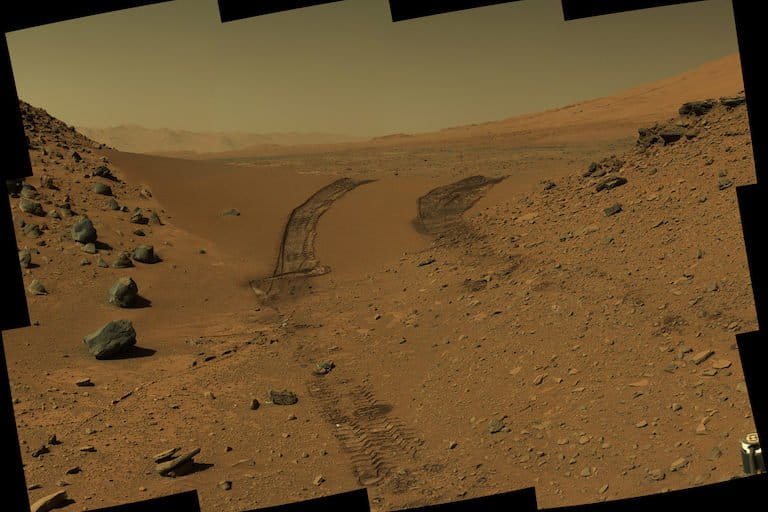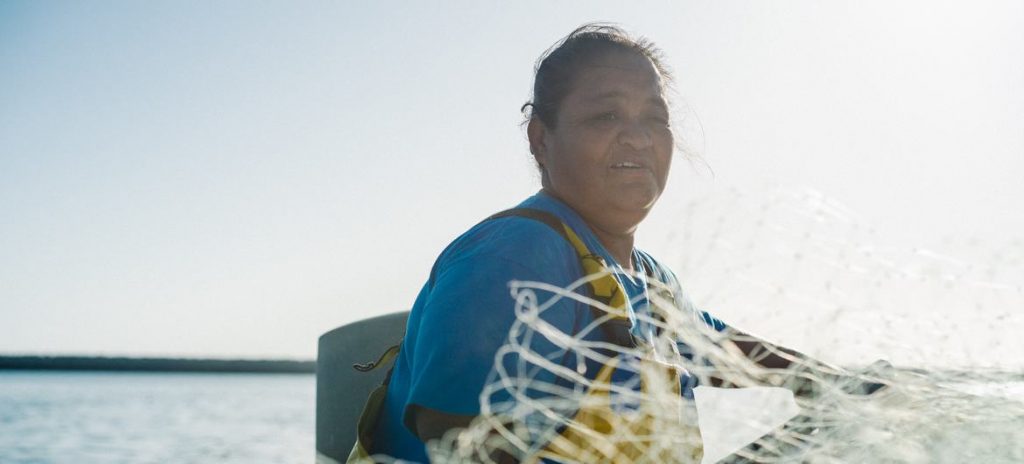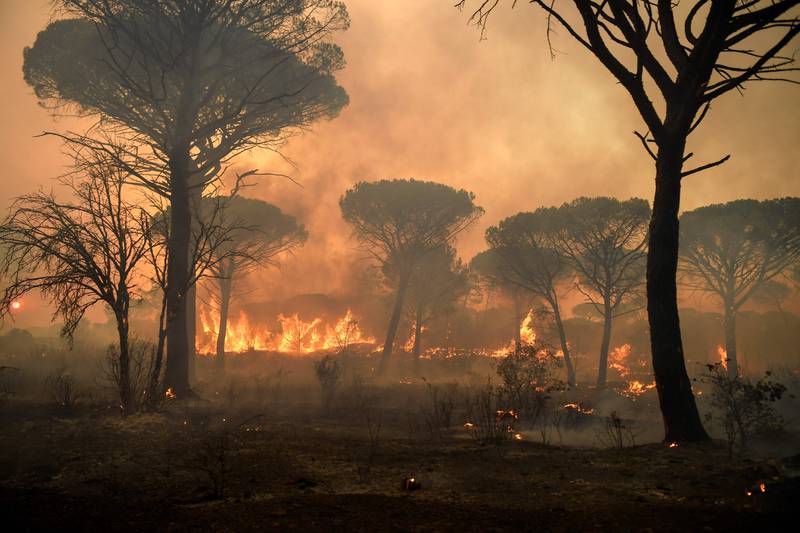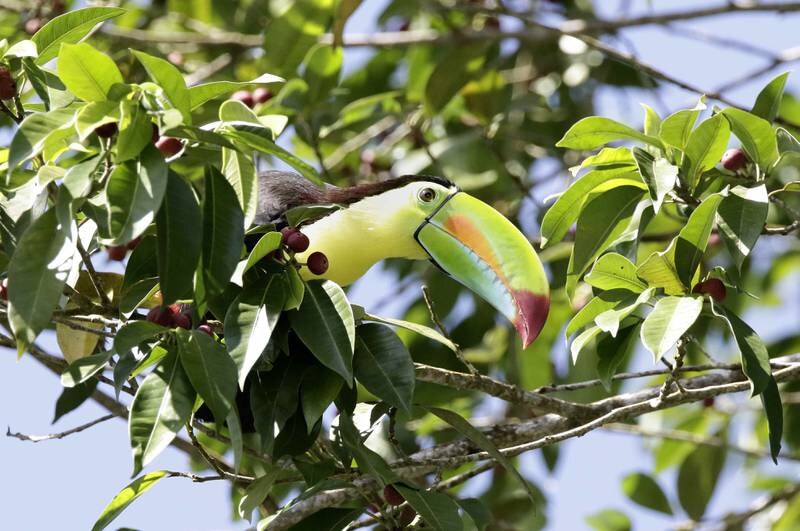Everyone is throwing this catchy slogan around these days, whether it be activists, writers, presidents, or the former Secretary-General of the United Nations. It gives strong impetus to address our planetary crisis. But they don’t actually explain why there isn’t another planet we could live on. So, is it true? What do Earth sciences and astronomy tell us?
Next time you’re out on a clear night, look up at the sky and pick a star. It most likely has planets around it. Could we live on one of them? The data show that 1 in 5 stars host an “Earth-sized”, “temperate” planet. Astronomers deem a planet “Earth-sized” if it has a radius between 0.5-1 times that of Earth, and “temperate” if it receives between 30-100% of the heat that Earth receives from the Sun. There are around 300 billion stars in our galaxy, which adds up to 63 billion planets with sizes and temperatures similar to Earth!
Here’s the catch: while there are billions of planets out there, none of them is quite the way we need it to be in order to survive on it. Every planet has its own history and character, much like people do. There are almost eight billion people alive today; and yet everyone is different. Even identical twins each have their own unique personality and life story. The same goes for planets. We have no reason to expect any two planets to be alike. Thinking we could live on a planet just because it is a similar size and temperature to Earth is a bit like deciding that someone is our best friend after finding out their shoe size and favorite color.

Take Mars. It is half the size of Earth and receives 40% of the heat that we get from the Sun, so technically speaking, it is “Earth-sized” and “temperate”. The photos sent back by NASA’s Curiosity rover reveal familiar landscapes: we could be on Earth, perhaps somewhere in the Atacama desert. But don’t be fooled! Look at the sky: it’s a mucky brown-yellowish color. That’s because Mars has 100 times less air to breathe and it is full of dust. What little air it has is primarily carbon dioxide, which would immediately suffocate us. Oh, and it’s as cold as the Antarctic. Mars may have similar properties to Earth by astronomical standards, but it is nothing like Earth to us humans.
Any semi-reasonable plan to establish a long-term presence beyond Earth requires a planet to which we are fit. Earth was not always so friendly to humans as it is today. For around 90% of its 4.6 billion-year history, it had conditions completely incompatible with our survival. We have only been a part of our planet for less than 0.05% of its existence. Geological evidence from ancient rocks shows that Earth has had many faces. Earth’s earliest life was welcomed onto a world that would have been entirely inhospitable and alien to us: at the time, early Earth had green oceans and a red sky. It had no continents to stand on, no oxygen to breathe, and no ozone layer to protect us from the Sun’s harmful UV rays. And yet life took hold and thrived, slowly shaping Earth over hundreds of millions of years, eventually transforming it into a world capable of supporting complex organisms such as ourselves. For example, billions of bacteria worked over billions years to shape our atmosphere into air we can breathe.
Earth is the home we know and love not because it is “Earth-sized” and “temperate.” No, we call this planet our home thanks to its billion-year-old relationship with life. Just as people are shaped not only by their genetics, but by their culture and relationships with others, planets are shaped by the living organisms that emerge and thrive on them. Over time, Earth has been dramatically transformed by life into a world where we, humans, can prosper.
The relationship works both ways: while life shapes its planet, the planet shapes its life. Present-day Earth is our life support system, and we cannot live without it.
Despite impressive advances in technology, transforming Mars into a planet capable of supporting humans is complete science fiction. It took hundreds of millions of years to shape Earth into a world capable of supporting us. And that was with a 3.7 billion-year head start from the billions and billions of organisms that preceded us! Let’s be clear: when people talk about terraforming Mars, they’re talking about replicating this very same process, except without billions of planet-construction workers and on timescales of just a few human lifespans.

Another issue to consider is that other worlds are at unimaginable distances from us. Mars, our neighbor, is on average 225 million kilometers away. Imagine a team of astronauts traveling in a vehicle similar to NASA’s robotic New Horizons probe, one of humankind’s fastest spacecrafts – it recently flew by Pluto! With New Horizons’ top speed of around 58,000kph, it would take at least 162 days to reach Mars.
Beyond our solar system, the closest star to us is Proxima Centauri, at a distance of 40 trillion kilometers. Going in the same space vehicle, it would take our astronaut crew 79,000 years to reach planets that might exist around our nearest stellar neighbor. That’s 79,000 years one way.
Living on a warming Earth presents many challenges. But these pale in comparison to the challenges of converting Mars, or any other planet, into a viable alternative. Astronomers study Mars and other planets to better understand how Earth and life formed and evolved. We are not looking for an escape from our problems: Earth is our unique and only home in the cosmos. There is no planet B.
Dr. R. D. Haywood is an Assistant Professor in Astrophysics and Ernest Rutherford Fellow at the University of Exeter, UK. Her research is on planets that orbit other stars than the Sun. She has formal training in sustainability science and has been invited to talk about Earth as our unique home in the Cosmos at over a dozen institutions worldwide. Dr. A. E. Nicholson is a Leverhulme Research Fellow in Astrophysics at the University of Exeter, and holds a PhD in Geography. Her research focuses on understanding life-environment feedbacks and how these impact the long-term habitability of planets. Both authors are members of Exeter’s Global Systems Institute.
This article first appear on Mongabay. https://news.mongabay.com/2022/09/why-is-there-no-planet-b-commentary/?mc_cid=0019174b1a&mc_eid=eb8f305aea
The climate emergency needs to be tackled with every weapon in our arsenal, but one tool sits literally right beneath our feet. Soils, and the plants they generate, absorb about 30 per cent of the carbon dioxide emitted by human activity each year. Now Al Dahra Group is capitalising on this method of capturing and storing – or sequestering – carbon dioxide by adopting regenerative agricultural practices.
The UAE-based agricultural conglomerate, which has presence in five continents, has set aside 5,000 hectares on their farms to improve carbon sequestration. Al Dahra achieves this through a variety of approaches, including reducing tillage, giving up ploughing, using particular vehicles that ensure soils are not compacted as strongly, deploying biological tools to control pests, and using alfalfa and legumes to increase soil organic matter, which promote photosynthesis and protect the soil.
In Estonia we are helping the country and the farmers to achieve the EU objective of keeping greening in winter. We do this by helping the farmers to collect grasses and developing a program to seed mix grasses and Alfalfa. This way not only the farmers achieve EU greening objectives but they will also improve their margins and achieve a lower footprint thanks to the carbon sequestration.
“We can create climate resilience by investing in the soil which is just below our feet. Soil health is our insurance policy against harsh and extreme climate change,” says Samin Khan, Global Director – Enterprise Risk & ESG at Al Dahra Group.
A Living Business programme partner, the agribusiness firm specializes in the cultivation, production and trading of animal feed and human food commodities such as alfalfa, wheat, corn, rice, flour, fruits and vegetables.
Al Dahra began to focus on its ESG journey in 2020, informally it was always part of our business, Khan says, driven by a corporate vision that focused on mitigating climate and agriculture risks by reducing greenhouse gas emissions across Scopes 1 and 2, achieving national determined contributions in each of its operating countries, and responding to changing consumer demand.
Early gains show the way
Along the way, the Al Dahra faced several challenges, not least helping shift perceptions and farming practices. It approached the problem partly by sharing the data of the benefits of sequestration. “The main challenge was to tackle the cultural shift from conventional farming to regenerative and low-impact farming. It involved a lot of discussion and we needed to convince the existing farming team of the advantages of maintaining soil cover throughout the year,” Khan says. “Secondly, making the shift required a lot of detailed information before we were able to make the soil our partner instead of exploiting it.”
Regenerative soil practices and the consequent sustainable business model have significant helped some of the Al Dahra’s ventures, for example, in Morocco, the business has managed to achieve carbon neutrality, he says.
Now Al Dahra is focused on ensuring the business stays on track from an ESG point of view. “We will maintain and increase the number of trees on our land, ensure year-round soil cover and enhance the use of technology to minimise water consumption,” he says. “We will also recycle 100% of our agricultural and organic waste to increase soil organic matter.”
Al Dahra wants to achieve several goals by 2030, he says, including increasing soil organic matter as laid out by the Paris Accord, decreasing emissions use from chemical fertilizers and pesticides by 20%, cutting water consumption by a fifth, and converting 50% of energy requirements to renewables. Accordingly, Al Dahra is exploring several other ways to promote decarbonization across its agricultural operations, Khan says. “We want to consider using food additives such as red seaweed or other products to minimize methane emissions from livestock. We are also looking at green alternatives to chemical-based agricultural inputs, such as green ammonia for fertilizer use, microbes to help activate the soil, and bio stimulants or plant-based enhancers to improve crop production. Finally, we are also evaluating the use of precision farming and advanced technologies – including satellite imagery – to develop more sustainable agricultural models.”
Regional authorities in Egypt, the host country of the 2022 UN climate conference (COP27), are ramping up initiatives designed to improve the country’s environmental credentials, and speed up its transition to a low carbon economy. The event will begin on 4 November, in the Egyptian resort city of Sharm El-Sheikh.
Several COP27-related initiatives are underway in Egypt: they include projects related to sustainable transport, waste recycling, women's health, the transition to clean energy, sustainable cities, adaptation measures in the water and agriculture sector, and the links between peace and climate.
“The Egyptian Government recognises the huge responsibility of organising a successful conference”, says Dr. Samir Tantawy, a climate change expert at the United Nations Development Program (UNDP). “The summit needs to demonstrate the damage caused by the climate crisis, particularly in developing countries. For example, the Aswan , in southern Egypt, has experienced storms, snow and heavy rain for the first time. Developing countries need to be properly compensated”.
Beyond COP27, Egypt is working towards a 2050 national climate strategy, which is based around the reduction of emissions in all sectors, and adaptation to potential changes in the climate – in agriculture, water resources, coastal areas, and health.
The national strategy also aims to bring civil society, the government, and citizens together, at the local, regional, and national levels. A number of civil society organizations are participating in workshops and seminars to raise awareness of the summit, in the hope that it will help Egypt to achieve its climate strategy goals.
In preparation for the Climate Summit, the regional authorities in the Red Sea Governorate, in cooperation with a number of other state organisations, is holding a series of events aimed at raising awareness of environmental and sustainability concerns. These workshops will continue through to November, and the opening of the Conference.
Egypt's hosting of COP27 in Sharm El-Sheikh is seen as a great opportunity to promote international climate action, and to unify the demands of African and developing countries, particularly when it comes to issues of financing, and adaptation to the effects of climate change.
UN News will provide full coverage of COP27, including news and features, and a daily episodes of our flagship news podcast The Lid Is On. Subscribe on all major podcast platforms.
United Nations Secretary-General Antonio Guterres said developing nations were paying a "horrific price" for the world's reliance on fossil fuels, as he toured parts of Pakistan hit by floods blamed on climate change.
Nearly 1,400 people have died in flooding that covers a third of the country - an area the size of the United Kingdom - wiping out crops and destroying homes, businesses, roads and bridges.
Guterres hopes his visit will galvanise support for Pakistan, which needs at least US$10 billion to repair damaged infrastructure.
"Pakistan and other developing countries are paying a horrific price for the intransigence of big emitters that continue to bet on fossil fuels," Guterres said in a tweet, shortly before heading to see some of the most flood-affected areas.
"From Islamabad, I am issuing a global appeal: Stop the madness. Invest in renewable energy now. End the war with nature.
Pakistan receives heavy - often destructive - rains during its annual monsoon season, which is crucial for agriculture and water supplies.
But downpours as intense as this year's have not been seen for decades.
"INSANITY AND SUICIDE"
On Friday (Sep 9), Guterres lamented the lack of attention the world gave to climate change - particularly the industrialised nations that scientists blame.
"This is insanity, this is collective suicide," he said.
Pakistan is responsible for less than one percent of global greenhouse gas emissions, but is eighth on a list compiled by the non-governmental organisation Germanwatch of countries most vulnerable to extreme weather caused by climate change.
Guterres is touring flood-hit parts of the south on Saturday, and will also visit Mohenjo-daro, a centuries-old UNESCO-designated world heritage site threatened by the deluge.
Some 33 million people have been affected by the floods, which have destroyed around two million homes and business premises, washed away 7,000km of roads and collapsed 500 bridges.
• World’s largest container carrier MSC re-routes to keep away from endangered blue whales off the coast of Sri Lanka
• MSC encourages other shipping lines to take a more southerly route south of the official (TSS) shipping lanes
MSC Mediterranean Shipping Company has taken a major step to help protect blue whales and other cetaceans living and feeding in the waters off the coast of Sri Lanka by modifying navigation guidance in line with the advice of scientists and other key actors in the maritime sector.
MSC, a global leader in container shipping and logistics, began in mid-2022 to voluntarily re-route its vessels passing by Sri Lanka, on a new course that is approximately 15 nautical miles to the south of the current traffic separation scheme (TSS) for commercial shipping. Specifically, MSC has followed guidance based on research surveys completed by the International Fund for Animal Welfare (IFAW), with the World Trade Institute (WTI), Biosphere Foundation, University of Ruhuna (Sri Lanka), Raja and the Whales and University of St Andrews (UK), and additionally endorsed by the World Wide Fund for Nature (WWF), to change the routing for its vessels.
Westbound ship traffic is now limited to a latitude between 05 30N and 05 35N, and eastbound traffic is limited to a latitude between 05 24N and 05 29N in order to avoid designated cetacean habitats. An exception has been made for vessels embarking and disembarking for safety reasons in Galle, including in case of adverse weather. Additionally, smaller feeder ships sailing around the Bay of Bengal will reduce their speed to less than 10 knots in this area.

Reducing the risk of ship strike by as much as 95%
The area off its southern coast is one of the busiest shipping lanes in the world and is also inhabited by large populations of cetaceans, meaning that these animals may be at risk of colliding with ships. Simulations have shown that moving the official shipping lane 15 nautical miles to the south could reduce the strike risk to blue whales by ask much as 95% . However, despite years of advocacy by scientists, the shipping industry and NGOs, the boundaries of the official shipping line have not been reassigned to reduce the risk of ship strikes on cetaceans.
MSC takes various measures to protect marine wildlife, from adapting shipping service networks to keep away from designated whale breeding and feeding grounds, to reducing vessel speed and re-routing ships to avoid reported marine wildlife populations. At the core of MSC’s approach is a desire to generate multilateral action in close collaboration with governments, industry bodies, academia and other dedicated organisations.
Stefania Lallai, Vice President Sustainability at MSC Mediterranean Shipping Company, said:
“We believe that the commercial shipping sector has an important role to play in protecting cetaceans, specifically in helping to reduce the risk of ship collisions with whales. MSC is proud to rank at or near the top of whale safety shipping rankings. However, we are not at all complacent. We believe that raising awareness of these issues and encouraging collaboration between industry, scientific bodies, civil society and governments is essential as we strive collectively to do more to minimise the risk of ship strikes.”
Encouraging coordinated action
In Sri Lanka specifically, the liner shipping industry led by the World Shipping Council, of which MSC is a member, has advocated to create a new official marine traffic scheme that is fully separated from the blue whale feeding area. It is hoped that this will soon become a reality, so all large-scale commercial marine traffic moves to the more southerly zone that MSC ships are now guided to follow.
In the meantime, MSC urges all other ship operators to consider choosing a more southerly route past Sri Lanka, to significantly reduce the possibility of whale strikes.
Re-routing in the Mediterranean
In January 2022, MSC was the first major shipping line to re-route its ships on the west coast of Greece to reduce the risk of collision with endangered sperm whales in the Mediterranean. According to NGOs such as IFAW, OceanCare, WWF Greece and the Pelagos Cetacean Research Institute, if all ship traffic using this area made a similar routing adjustment, the ship strike risk to sperm whales would be reduced by almost 75 percent.
Protecting marine wildlife is part of MSC’s wider commitment to sustainable ecosystems
MSC sees sustainability as an integral part of its business and is committed to protecting the environment and contributing to sustainable ecosystems. While the deviation of ships to follow longer routes to protect marine habitats may slightly increase transit times for containerised goods and, consequently, add to fuel consumption, MSC remains simultaneously focused on tackling multiple sustainability challenges such as climate change and is targeting net zero decarbonisation by 2050. Cetaceans themselves represent a valuable means of sequestering carbon and MSC will continue to work with government and industry actors to protect marine life, biodiversity and further reduce its environmental impact, including through mitigating climate change.
Source: press release
Hazards such as earthquakes, floods, heatwaves, and wildfires, can be prevented from becoming life-threatening disasters, according to the authors of a new UN report.
From record-breaking heatwaves in British Columbia, to wildfires in the Mediterranean, floods in Nigeria, and droughts in Taiwan; the period between 2021 and 2022 saw record-breaking catastrophic disasters in all corners of the world.
Some 10,000 people lost their lives, and an estimated $280 billion was incurred in damages worldwide.
The latest Interconnected Disaster Risks report, from the UN University Institute for Environment and Human Security (UNU-EHS), finds that many of these disasters shared root causes. At the same time, the study’s authors found that the solutions to preventing or managing them are also closely linked.

Strong winds and high temperatures have caused wildfires to spread across Athens in Greece.
Connecting the dots
“Disasters occurring in completely different parts of the world at first appear disconnected from each other. But when you start analyzing them in more detail it quickly becomes clear that they are caused by the same things, for example greenhouse gas emissions or unsustainable consumption,” said Dr. Zita Sebesvari, lead author and deputy director of UNU-EHS.
To connect the dots, the research team of the Interconnected Disaster Risks report looked “below the surface” of each disaster and identified the drivers that allowed them to occur in the first place.
For instance, deforestation leads to soil erosion, which in turn makes land highly susceptible to hazards such as landslides, drought, and sandstorms.
An even deeper dive shows that the drivers of disasters are formed by shared root causes which are more systemic in nature, such as through economic and political systems.
Deforestation can be traced back to placing economic interests over those of the environment and to unsustainable consumption patterns.
Other common root causes found in the report include inequality of development and livelihood opportunities, human-induced greenhouse gas emissions, and legacies of colonialism. It is root causes like these that can be found in disasters around the globe.
The connections do not stop at root causes and drivers either, but also with who and what is at most risk; vulnerable groups, in both human settlements and natural ecosystems, continue to be the hardest hit by disasters.

Storm approaching Kuala Lumpur, Malaysia.
'Let nature work’
However, the solutions are also interconnected, which means that one type of solution can be applied in several contexts to reduce the impact of disasters in different parts of the world. Additionally, there are multiple solutions to address one disaster and they are most powerful when applied in combination with each other.
The “let nature work” solution, for example, draws on the strength of nature to prevent risks and avoid disasters.
Prescribed burning in forests can reduce the risk of mega-fires in the Mediterranean; restoring urban rivers and streams can reduce the impacts of floods like the one that hit New York in the wake of Hurricane Ida; and investing in boosting early warning systems can improve prediction and communication of risks ahead of time.
In three of the events analyzed in the report – the British Columbia Heatwave, the Tonga volcano and tsunami, and Lagos floods, in Nigeria – early warning systems could have reduced fatalities the report finds.
“If we don't want the disasters which we are currently experiencing to become the new normal, we need to recognize that they are interconnected, as are their solutions,” says lead author Dr. Jack O’Connor.
“We have the right kind of solutions to better prevent and manage hazards, but we need to urgently invest in scaling them up and developing a better understanding of how they can work in combination with each other.”

Maria Antonia, from Baja California, Mexico, wakes up every day before dawn to catch milkfish, corvina and sierrita.
‘We are all part of the solution’
Not all solutions will be convenient for everyone. The redistribution of resources among generations, countries, and groups of people with different vulnerabilities, or requesting the inclusion of stakeholders who are rarely heard, will mean that some will need to share their resources more broadly than they currently do.
The solutions are not limited to governments, policymakers, or the private sector. They can also be carried out at the individual level, the researchers urge.
“We can let nature work when we give spaces back to it. We can promote sustainable consumption by being mindful of where our food comes from and where we buy it.
“We can work together to prepare our communities in the event of a disaster,” says O’Connor. “The point is that we, as individuals, are part of a larger collective action, which goes a long way in creating meaningful positive change. We are all part of the solution”.
Source: Press Release
- Diageo launches three challenges focussed on: water, carbon and biodiversity impacts
- Challenges are part of Diageo Sustainable Solutions to fund innovative technologies to help the company reach its sustainability goals in its ESG action plan Society 2030
- Up to £450k available across all three challenges
Diageo today announces £450k of funding for three innovations intended to lessen and monitor the impact of water and climate crises on smallholder farms in Africa.
Smallholder farmers are highly vulnerable to weather changes and water scarcity arising from climate change. As part of its Society 2030: Spirit of Progress ESG action plan, Diageo is building resilience in its communities and monitoring its farming programmes to preserve natural resources.
Diageo Sustainable Solutions launched in November 2020 to foster collaboration between Diageo and innovators on the next generation of sustainability technology. The objective of the global programme is to discover and develop innovators and technology that can help Diageo achieve its sustainability goals by 2030. Current pilots underway from previous application rounds include a partnership with EXXERGY, Dassault Systemes and Ardagh group to develop a coating to make glass thinner without losing its strength to reduce emissions and the resources needed.
Innovators, start-ups and those who have developed relevant technology in other sectors, or who need seed funding to further develop their technology, are invited to apply. The three challenges are now open for applications until Friday 7th October.
The three challenges will focus on:
- Water: Over the next 50 years, rainfall in Africa is projected to decrease by 10–20% or more, threatening to undermine global progress toward poverty alleviation, food security, and sustainable development. It is imperative that soil water holding capacity and monitoring is greatly improved on smallholder farms to maximise productivity. Relevant solutions could include soil additives for water retention, hyper-local weather forecasting, or probes for taking readings from the field.
- Carbon: Carbon is critical to soil function and productivity, and a main component of and contributor to healthy soil conditions but can also be released in the atmosphere by agricultural practices. There is a need to improve the soil carbon measurement, modelling, interpretation and monitoring to quantify the amount of carbon in the soil and support soil health improvements. Relevant solutions could include remote monitoring for landscape-scale intelligence, modelling carbon sequestration linked to land management and spectral devices.
- Biodiversity: Biodiversity and climate are two sides of the same coin and biodiversity is vital to mitigating and adapting to climate change. It is vital that biodiversity measuring also improves so it’s possible to track the types and changes in biodiversity throughout time. Relevant solutions could include camera trapping, co-operative models working with smallholder farmers and on farm or remote data collection practices.
Commenting, Kirstie McIntyre, Global Sustainability Director, said: “Even under the 1.5c trajectory called for by the Paris Agreement, farmers in the southern hemisphere will need help to adapt to climate change. Our next Diageo Sustainable Solutions round will create action for innovators around the world to help save lives and livelihoods in the countries and communities that are most at risk.”
The pilots will be taking place in East Africa and if successful will be rolled out across Diageo’s smallholder farmer network across Cameroon, Ghana, India, Kenya, Mexico, Nigeria, Tanzania, Turkey, the Seychelles, South Africa and Uganda.
John Cant, Head of Diageo Sustainable Solutions, said: “Globally, we have unpredictable weather with increasing droughts and floods and a gap in our agriculture monitoring capabilities. Soil moisture monitoring must be improved so we can look at where we can improve soil water holding capacity, supporting our farmers to maintain a steady farming cycle and income.”
For more information on the challenges and to apply, visit: www.diageo.com/DSS
Burberry announced today that its carbon reduction targets to reach net-zero emissions by 2040 have been approved by the Science Based Targets initiative (SBTi).
Burberry has become the first luxury brand to receive approval from SBTi, which assesses companies climate action and ensures they are in line with the Paris Agreement.
The fashion giant’s net-zero ambition for 2040 targets Scope 1, 2 and 3 emissions. Scopes 1 and 2 cover emissions generated from Burberry’s own operations, such as electricity and gas in stores, manufacturing hubs and offices. Scope 3 refers to emissions in its extended supply chain, such as energy usage by manufacturing and material sourcing partners.
It aims to reduce Scope 1 and 2 emissions by 95% by 2023, compared to 2017 levels. Scope 3 emissions will be reduced by 46.2% by 2030, compared to 2019 levels.
Caroline Laurie, vice president of corporate responsibility at Burberry, said: "The Science Based Targets initiative (SBTi) plays a critical role in ensuring ambitions set by businesses are in line with the latest climate science and will contribute to tackling the climate emergency. Rooting our commitments in science has always been a priority at Burberry, so we can ensure the steps we are taking will have the necessary impact and bring about lasting change.
"We continue to challenge ourselves to drive measurement, improvement and transparency across our operations and we are committed to continue working with our suppliers and partners to accelerate the adoption of more sustainable practices. We hope this encourages others to do the same."
Source: Drapers Online
UN warns human-induced environmental change is to blame
Some of the planet’s most stunning creatures, including giraffes and parrots, are at risk from global warming and other human-induced environmental change, the UN has warned.
One million species are threatened, a new report has said. Familiar plant species, including dozens of types of oak, are at risk, along with mammals, birds and other animals.
Despite the scale of the issues facing the planet, the UN has said that governments are spending half a trillion dollars a year supporting agriculture, fisheries and fossil fuel industries in ways that harm nature.
In a statement released this week, the UN highlighted the stark findings of a recent report from the Intergovernmental Science-Policy Platform on Biodiversity and Ecosystem Services, an organisation set up to deal with issues related to biodiversity loss.
The UN cited International Union for Conservation of Nature figures that around 31 per cent of the world’s 430 oak species were threatened with extinction.
Tree species are facing several threats including an increase in the frequency of wildfires due to climate change, and deforestation because of industry, agriculture and firewood.

To prevent species extinctions from continuing on a mass scale, Dr Alexander Lees, a reader and conservation biologist at Manchester Metropolitan University, said “transformative change” was needed.
While the setting up of nature reserves, for example, is valuable, he cautioned that people were sometimes engaged in “band aid conservation”.
“We’re trying to fix deep wounds without the tools to do so,” he said.
“We’re stuck trying to save the last few species from extinction. We’re not stopping this huge flow of species on to the global red list [of threatened species] … We’re beyond the simple stuff, where we can protect species x with patch of habitat y.”
It was important to think more about how to use land and to engage in “pre-emptive decision-making” to take action before further deterioration.
Many problems stemmed, he said, from global patterns of consumption and “the endless rush to acquire more stuff”.
The world is often seen as being in the midst of the sixth mass extinction since life emerged about four billion years ago. The most recent previous mass extinction took place about 66 million years ago, wiping out most dinosaurs.
A separate study released by researchers at the University of Sheffield in the UK found that unusual bird species were likely to be among the most heavily threatened by the destruction of the natural world.
Looking at nearly 8,500 bird species, the scientists found that those with “unique traits” were more likely to be at risk of extinction.
Some analysts have concluded that, as a result, the likes of toucans, puffins and hummingbirds may face particularly uncertain futures.

There would probably be, the researchers wrote in the journal Current Biology, a “decline of species with unique traits and their replacement with more widespread generalist species”.
Dr Lees, who was not connected to the new study, said it was likely to be the case among other organisms, not only birds, that more unusual species were at greater risk in the Anthropocene ― the current, human-dominated, geological age.
“Specialisation, when you’re getting odd lineages evolving odd morphologies [physical traits] to do something very specific, in the Anthropocene that’s often not a winning hand to play, because environments are being changed, land uses are being changed, the climate is changing,” he said.
“If you’re a real specialist and you’ve evolved to do one thing in one location, and that location changes, then you’re in trouble.
“So it does favour the generalist wildlife and we end up getting this homogenisation, not just of species, but also of functional traits. We end up with species that look more similar to each other.”
Responding to the IPBES report, the United Nations Environment Programme warned there would be significant consequences for people if biodiversity was not conserved.
Susan Gardner, director of the organisation’s ecosystems division, said that wild species were “an indispensable source of food, shelter and income for hundreds of millions”.
“By continuing to use these resources unsustainably, we are not just risking the loss and damage of these species’ populations; we are affecting our own health and well-being and that of the next generation,” she said.
Echoing this, Dr Lees said nature was important to people in multiple ways, with impacts on “human health, human well-being and dietary resilience” likely to follow if nature is not conserved.
“And beyond that, why should we care?” he said. “There are probably lots of species that it would be very difficult to say, ‘This species, this incredible beetle here, is fundamental for humankind.’ It probably isn’t at all.
“But conservations biologists like myself think it’s unethical for us to eliminate species … [And] many of us take great pleasure in seeing wild nature.
“There’s myriad reasons why the general public should be interested and should be worried if we end up haemorrhaging this biodiversity.”
The IPBES report emphasises the importance of protecting the rights of indigenous people, because they have a long history of managing areas sustainably.
Source: The National News
Reprinted from GreenBuzz, a free weekly newsletter.
Remember the Sustainable Development Goals?
It’s not a facetious question. Amid all the other corporate sustainability priorities of the past few years — net zero, ESG, the circular economy, social justice, resource constraints and all the rest — not to mention a seemingly never-ending drumbeat of political upheaval, economic uncertainty and a pandemic, the SDGs seem to have fallen off the business agenda. Now, as we near the halfway point of the SDGs’ ambitious 15-year framework to tackle the world’s thorniest social, environmental and economic challenges, progress is dismal at best.
That’s the conclusion of a new United Nations report that assesses the progress being made against the 17 SDGs. It’s not at all encouraging.
Stop reading here if you want to remain blissfully ignorant or don’t want to harsh your summer mellow with an ice-bucket reality check or if you’d prefer to celebrate your company’s hard-earned sustainability successes without having to ask the bigger question: Are all those initiatives and achievements making a tangible difference on the global issues that matter?
You already know the answer: Not so much.
For those who need a refresher, the SDGs — the Global Goals, as they’re also called — were promulgated in 2015 by the U.N. General Assembly and adopted by all 193 member states. They succeeded the Millennium Development Goals, another 15-year initiative, adopted in 2000. The 17 goals cover a multitude of complex issues, including eliminating poverty and hunger, and ensuring good health, quality education, gender equality, clean water and sanitation, affordable and clean energy, decent work, responsible consumption, healthy oceans and several other outcomes.
The goals were designed to be broad. In 2017, the U.N. fleshed them out a bit, listing eight to 12 targets for each goal — 169 targets across the 17 goals — as well as 231 “indicators” that can gauge progress.
For example, under Goal No. 13 — “Take urgent action to combat climate change and its impacts” — one target aims to “strengthen resilience and adaptive capacity to climate-related hazards and natural disasters in all countries.” Among that target’s three indicators is “the number of deaths, missing persons and directly affected persons attributed to disasters per 100,000 population.” The other 16 goals are similarly mapped out.
So, how are we doing? As I said, not very well, according to the 2022 Sustainable Development Goals Report, published last week by the U.N. The status report’s conclusion is telegraphed on the very first page in a foreword penned by U.N. Secretary-General António Guterres: “We need an urgent rescue effort for the SDGs.”
“Rescue effort” pretty much sums it up. We’re losing ground faster than we’re making progress — one step forward, two steps back.
Thwarted progress
The pandemic is partly to blame. Aside from the horrendous toll it’s taken on human lives, it’s had a deleterious effect on most of the 17 goals.
For example, the pandemic “put steady progress in poverty reduction over the past 25 years into reverse,” said the report, “with the number of people in extreme poverty increasing for the first time in a generation.” It exacerbated already deteriorating food security, with about 150 million more people facing hunger in 2021 than in 2019. Pandemic disruptions caused millions of children to miss out on essential vaccines such as for measles and diphtheria-tetanus-pertussis. COVID-related school closures threaten to reverse years of progress aimed at keeping children in school, in particular girls and young women. The pandemic has caused the first rise in between-country income inequality in a generation.
The list goes on. And on.
It’s not just the pandemic. The teetering global economy, climate-exacerbated resource shortages, the Russia-Ukraine war and political upheaval around the world all have taken a toll on progress toward the SDGs. For example, according to the report, electrification of poorer countries has slowed due to the difficulty of reaching the most remote villages. Global manufacturing is rebounding, but poorer countries are being left behind. At the current pace of change, it will take another 40 years for women and men to be equally represented in national political leadership, the U.N. said.
The report isn’t pleasant reading, and I derive no joy in sharing it with you. But it’s a vital, sobering reality check. There’s simply no way to sugarcoat it: We are failing as a species.
Where does business fit in? In the ways it always does: as an economic engine creating jobs and wealth, as an extractor and consumer of natural resources, as a manufacturer and distributor of goods and services, as an influential member of local communities, as a voice to policy makers, as an educator to customers and employees. Each of these affords an opportunity for companies to reach beyond mere philanthropy or eco-efficiency improvements to play a larger, more impactful role in society.
So, how, and how much, are the SDGs showing up inside companies these days? And to the extent that they are, is it making a measurable difference? Are companies doing anything new to support the SDGs or simply aligning their already-existing commitments and initiatives with the 17 goals? How, if at all, are they measuring progress?
A few years ago, we saw a number of companies aligning their corporate sustainability initiatives with the SDGs, but that seems to have tapered off, no doubt giving way to other front-burner issues. Besides, the linkages between companies and the Global Goals were always tenuous: How much credit can a company actually claim for, say, helping end poverty? Protecting oceans? Promoting social justice? Can a company establish its “fair share” of these problems, as the Science-Based Targets initiative attempts to do for carbon pollution, then aim to remedy it?
Until it can, many corporate commitments to the SDGs may be chalked up as P.R. (Have you heard about “SDG washing”? It’s a thing.)
What are you seeing? How is your company, or companies in general, engaging with the SDGs? Who seems to be doing it well? Are any sectors leading the way? I welcome your comments.
I’ll end with a poignant quote in the report from Liu Zhenmin, the U.N.’s under-secretary-general for economic and social affairs, who bluntly articulated not just the severity, but also the opportunity, of this moment:
“The world is facing a confluence of crises that threaten the very survival of humanity. All of these crises — and ways to prevent and navigate them — are addressed holistically in the SDGs. We ignore them at our own peril.”
Source: GreenBuzz


